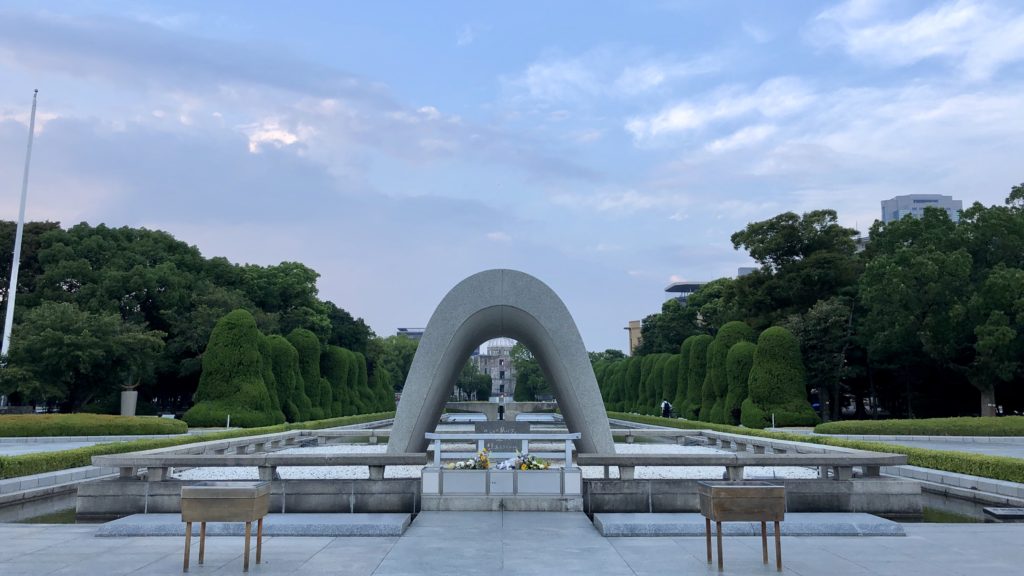[Disarmament Week] Nuclear Disarmament is progressed or stagnated?
October 24-30 is the UN disarmament week.
How is the present situation of nuclear disarmament?
Since 2013, Hiroshima Prefecture has released “Hiroshima Report” analyzed and evaluated the status of efforts in each country toward nuclear disarmament. In this article, we would like to introduce the present situation of nuclear disarmament based on Hiroshima Report from 2013 to 2020.
We would like you to learn about the efforts of each country and think about what is necessary to move forward towards the abolition of nuclear weapons.

The number of nuclear weapons decreased about 5,000
The number of nuclear weapons as of January 2012 is 19,055 according to the first edition of Hiroshima Report released in 2013. The number as of January 2019 is 13,895 according to the latest edition of Hiroshima Report released in 2020. 5,160 nuclear weapons decrease for 7 years. (See the graph)
Hiroshima Report 2020 pointed out the present status of the development of nuclear weapons.
“all nuclear-weapon/armed states continue to modernize their nuclear forces. In particular, Russia and China have been actively promoting the development and deployment of various new delivery vehicles capable of carrying nuclear warheads. ”

The crisis of the collapse of nuclear arms control agreements and the adoption of the Treaty on Prohibition of Nuclear Weapons
The Intermediate-Range Nuclear Forces (INF) between the United States and Russia who have 90 % of nuclear weapons was expired on August 2, 2019. The treaty was the first agreement in the field of nuclear disarmament to eliminate a certain category of nuclear weapons and let to end the cold war. The expiration of the treaty without alternative measures will threaten the beginning of a new arms race and increasing risk of using nuclear weapons. Moreover, the New Start which is a bilateral agreement the United States and Russia is set to expire in February 5, 2021. Hiroshima Report 2020 pointed out the New Start as follow and We can say that the nuclear disarmament by Nuclear Weapon States is stagnated.
“The United States also signaled disinterest in extending the New Strategic Arms Reduction Treaty (New START) beyond its current expiration date of February 5, 2021, while Russia offered to do so. The United States is increasingly arguing that not just the United States and Russia but also China should participate in a nuclear arms control process. However, China has repeatedly argued that it would not join such a process without further reduction of U.S. and Russian nuclear arsenals, and the U.S. has made little effort to initiate nuclear arms control talks to engage both China and Russia.”
Meanwhile, the Treaty on Prohibition of Nuclear Weapons (TPNW) was adopted on July 7, 2017.
As of October 23, 2020, the number of the state parties are 49. The treaty enters into force after 50 states have ratified or acceded to it.
Please see the below articles about TPNW.
What is TPNW? https://hiroshimaforpeace.com/en/tpnw2019-11/
The latest status of TPNW https://hiroshimaforpeace.com/en/status-tpnw/
Please see the timeline toward the abolition of nuclear weapons.
https://hiroshimaforpeace.com/en/hiroshima75/present-issue/
Efforts of nuclear disarmament by Non-Nuclear Weapon States
Hiroshima Report analyzes and evaluates 27 countries’ efforts of nuclear disarmament.
According to Hiroshima Report 2013, Japan has the highest evaluation in the field of nuclear disarmament.
- Hiroshima Report 2013 evaluates the following Non-Nuclear Weapon States, Iran, Syria, Australia, Brazil, Germany, Japan, South Korea, South Africa, Sweden and Switzerland.
https://hiroshimaforpeace.com/en/hiroshimareport/report-2013/
According to Hiroshima Report 2020, Austria has the highest evaluation in the field of nuclear disarmament.
- Hiroshima Report 2020 evaluated the following Non-Nuclear Weapon States, Australia, Austria, Belgium, Brazil, Canada, Chile, Egypt, Germany, Indonesia, Iran, Japan, Kazakstan, South Korea, Mexico, Netherland, New Zealand, Nigeria, Norway, Philippine, Poland, Saudi Arabia, South Africa, Sweden, Switzerland, Syria, Turkey, UAE.
Hiroshima Report 2020 evaluates Austria as follow.
“Austria has played a leading role in promoting the issue on humanitarian dimensions of nuclear weapons, and adopting the TPNW. It has already ratified the treaty. It has also proactively engaged in cooperation with civil society. Austria submitted a national report to the 2019 NPT PrepCom.”
Hiroshima Report 2020 also evaluates Japan as follow.
“Along with the other U.S. allies, Japan advocates the “Progressive approach” toward a world without nuclear weapons, through incremental practical measures. It has not signed the TPNW. Japan has proactively engaged in nuclear disarmament, as one of the countries that lead efforts to promote and strengthen those areas, particularly for achieving a world without nuclear weapons, promoting for achieving a world without nuclear weapons, promoting entry into force of the CTBT, and undertaking disarmament and non-proliferation education. The UNGA resolution on nuclear disarmament ld by Japan was criticized by some NNWS. Japan participated in the IPNDV. It submitted a national report to the 2019 NPT PrepCom.
See Hiroshima Reprot 2020
Tags associated with this article






